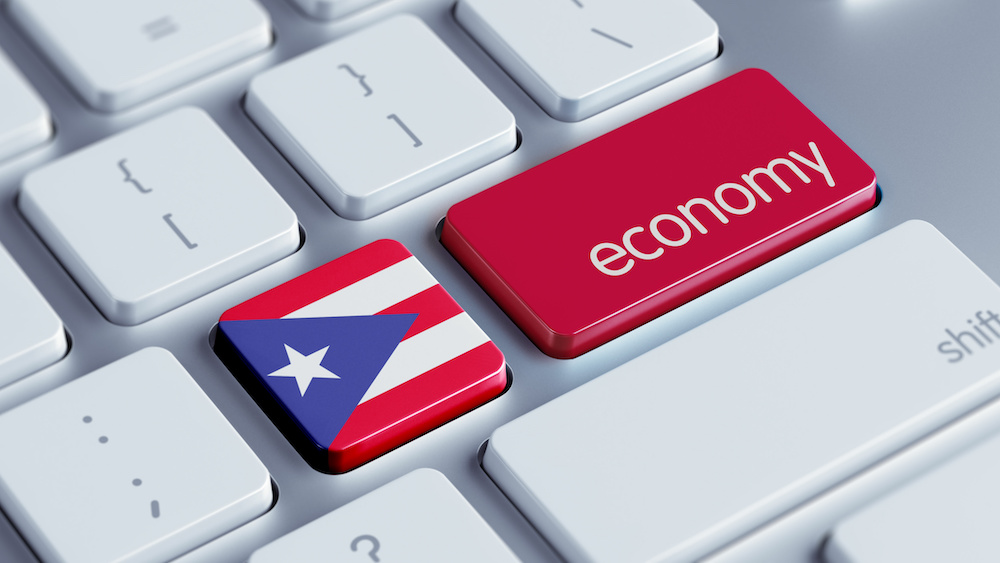Julio Sepulveda asked us about Puerto Rico’s GDP, or gross domestic product. It’s higher than some states, right?
Not really. Let’s look at the data.
What is GDP?
GDP is the monetary value of everything produced in one place in a given period of time. Usually that means the value of all the goods and services produced within a country or state or territory in a year.
From Wikipedia, here’s the data for 2020: Puerto Rico produced $103,140 in goods and services.
| Territory | Nominal GDP at Current Prices (millions of U.S. dollars) (2020) |
Real GDP growth rate (2020) | GDP per capita (2020) |
|---|---|---|---|
| $103,140 | $31,429 |
How does Puerto Rico compare with the states?
We checked a lot of sources, but the best source we found to show Puerto Rico’s GDP compared with the GDPs of states was Wikipedia.
We can see that Puerto Rico has a higher GDP than a number of states. Vermont, for example, has a lower GDP than Puerto Rico.
Vermont has a GDP of $36,170.1 in millions of dollars. Here are all the states with lower GDPs than Puerto Rico:
-  New Hampshire
- Idaho
-  Hawaii
-  West Virginia
-  Delaware
-  Maine
-  Rhode Island
-  North Dakota
-  South Dakota
-  Montana
-  Alaska
-  Wyoming
-  Vermont
Here’s the thing: the populations of those states are smaller than Puerto Rico. Vermont has just 624,340 people, compared with 3.2 million in Puerto Rico.
Per Capita GDP
If you earn $50,000 a year and you have one person in your household, you are a lot richer than if you earn $50,000 and you have a family of ten to support. Just so, Vermont supports far fewer people than Puerto Rico, so the lower GDP does not mean that Puerto Rico is more prosperous than Vermont.
What we need to look at is the per capita GDP. That tells us how much was produced per person in the state or territory. Vermont’s per capital GDP is $56,028. Puerto Rico’s is $31,429. That’s actually less than Guam or the Virgin Islands, and it is less than any state.
Mississippi is the state with the lowest GDP. It is $42,411, compared with $68,853 for the United States as a whole. It is still more than Puerto Rico’s. This is a consequence of Puerto Rico’s territory status.
Why does this matter?
Julio said, “PR51st, What i see is PR is number 39th in GDP of all US states, # 1 of all US territories and #62 in the World. If all this is correct why would PR give up its right to sovereignty?”
Puerto Rico actually has a lower per capita GDP than all of the states and half of the territories. If you look at the whole (the nominal) GDP without considering population size, then yes, Puerto Rico has a higher GDP than the other territories and quite a few of the states.
Julio’s argument, if we understand it correctly, is that Puerto Rico can afford to be independent, so why not go for it?
The Philippines chose independence and became an independent nation in 1946 after being a U.S. territory. Their GDP is $3,687 in millions. Obviously, Puerto Rico could be an independent country if the Philippines can. The difference is that Puerto Rico does not want independence. No governor or resident commissioner has ever come from the Independence Party. Independence has never gotten more than 5% of the vote in any status referendum.
Most of us cherish our U.S. citizenship and want the benefits and responsibilities of statehood. Where the statehood supporters and the independence supporters agree is that Puerto Rico should no longer be a colony of the United States. We should have the sovereignty of a state or the sovereignty of an independent nation. We should not continue to limp along as an unincorporated territory.








No responses yet